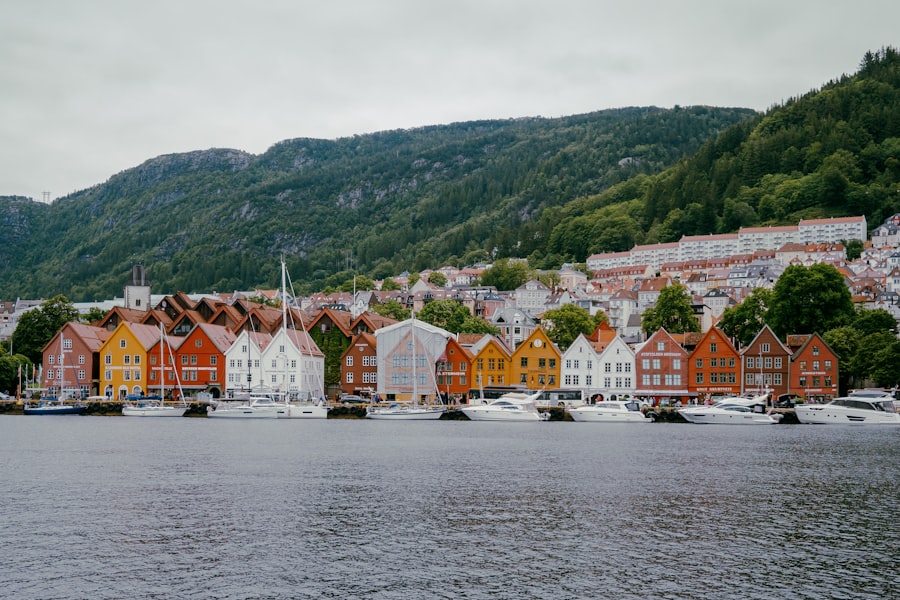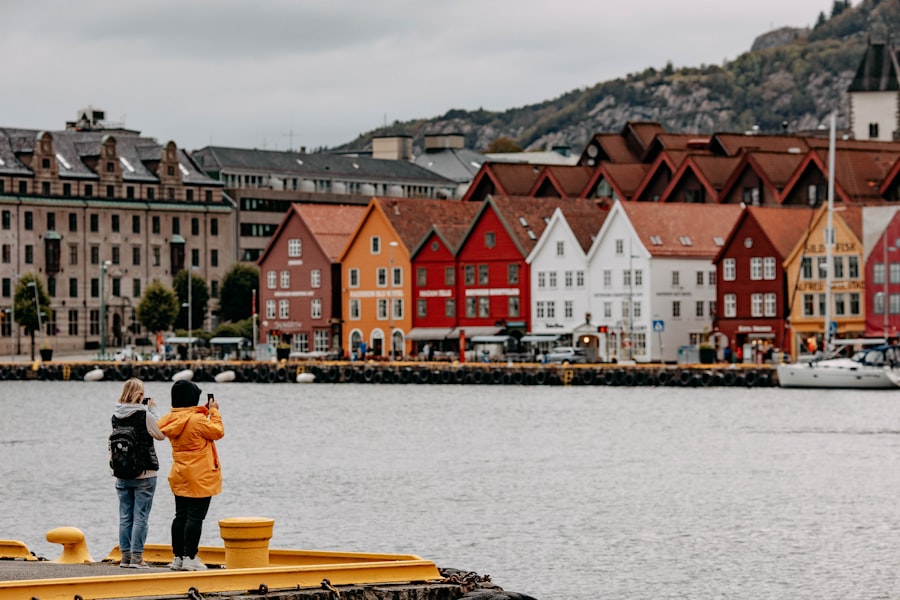Maundy Thursday and Good Friday hold profound significance in Norway, marking pivotal moments in the Christian calendar. These days are not merely observed as public holidays; they embody a deep spiritual resonance that reflects the nation’s cultural and religious heritage. For many Norwegians, these days serve as a time for reflection, remembrance, and communal gathering, reinforcing the values of faith and family.
The observance of these days is intertwined with the broader context of Easter celebrations, which are among the most cherished in Norwegian society. The importance of Maundy Thursday and Good Friday extends beyond religious observance; they are also a time for personal introspection and community bonding. As Norwegians engage in various traditions and rituals, they connect with their history and the teachings of Christianity.
This connection fosters a sense of unity among individuals and families, as they come together to honour the events that shaped their faith. The significance of these days is palpable in the atmosphere, as towns and cities across Norway prepare for the solemnity of the occasion. Your journey to a smooth relocation starts here. Talk one-on-one with a Norway Relocation specialist and turn your plan into a reality.
Summary
- Maundy Thursday and Good Friday are significant religious holidays in Norway, marking the Last Supper and the crucifixion of Jesus Christ.
- The historical background of Maundy Thursday and Good Friday dates back to the events leading up to Easter in the Christian tradition.
- Maundy Thursday and Good Friday hold religious significance as they commemorate the Last Supper and the crucifixion of Jesus Christ in the Christian faith.
- Traditional customs and practices on Maundy Thursday and Good Friday in Norway include attending church services, fasting, and participating in processions.
- Church services and observances play a crucial role in the commemoration of Maundy Thursday and Good Friday in Norway, providing a space for reflection and worship.
The historical background of Maundy Thursday and Good Friday
The historical roots of Maundy Thursday and Good Friday can be traced back to the early Christian church, where these days were established to commemorate the final events in the life of Jesus Christ. Maundy Thursday, also known as Holy Thursday, commemorates the Last Supper, during which Jesus instituted the Eucharist and washed the feet of his disciples. This act of humility and service is central to Christian teachings and has been celebrated for centuries.
Good Friday, on the other hand, marks the crucifixion of Jesus Christ, a pivotal event in Christian theology that signifies sacrifice and redemption. The observance of these days in Norway has evolved over time, influenced by various cultural and historical factors. The Protestant Reformation in the 16th century played a significant role in shaping how these days were celebrated, as Norway transitioned from Catholicism to Lutheranism.
This shift brought about changes in liturgical practices and community observances, which continue to resonate in contemporary Norwegian society.
The religious significance of Maundy Thursday and Good Friday

The religious significance of Maundy Thursday and Good Friday is profound, as they encapsulate the core tenets of Christianity: sacrifice, redemption, and love. Maundy Thursday invites believers to reflect on the themes of servitude and humility exemplified by Jesus during the Last Supper. The act of foot washing serves as a powerful reminder of the call to serve others selflessly, a principle that resonates deeply within Norwegian culture.
Good Friday, conversely, is a day steeped in sorrow and contemplation. It invites Christians to meditate on the suffering and sacrifice of Jesus on the cross. This day serves as a poignant reminder of the cost of salvation and the depth of divine love.
In Norway, many individuals engage in personal reflection during this time, contemplating their own lives in light of these significant events. The religious significance of these days fosters a sense of connection to something greater than oneself, encouraging believers to live out their faith in tangible ways.
Traditional customs and practices on Maundy Thursday and Good Friday in Norway
In Norway, traditional customs surrounding Maundy Thursday and Good Friday are rich and varied, reflecting both religious observance and cultural heritage. On Maundy Thursday, many families partake in a special meal that often includes lamb or fish, symbolising purity and sacrifice. This meal is typically enjoyed together, fostering a sense of unity among family members as they gather to reflect on the significance of the day.
Good Friday is marked by a more solemn atmosphere, with many Norwegians choosing to abstain from certain activities as a sign of respect for the day’s significance. It is common for people to refrain from eating meat on this day, opting instead for fish or vegetarian meals. Additionally, many communities organise processions or gatherings that focus on prayer and reflection.
These customs serve to reinforce the spiritual essence of the days while also providing an opportunity for families to bond over shared traditions.
The role of church services and observances on Maundy Thursday and Good Friday
Church services play a central role in the observance of Maundy Thursday and Good Friday in Norway. On Maundy Thursday, many congregations hold special services that include the Eucharist, foot washing ceremonies, and readings from scripture that recount the events leading up to Jesus’ crucifixion. These services are often attended by families who come together to participate in communal worship, reinforcing their faith through shared experiences.
Good Friday services are typically characterised by a more somber tone, focusing on the crucifixion narrative. Many churches hold vigils or meditative services that encourage congregants to reflect on the significance of Jesus’ sacrifice. The use of music, scripture readings, and prayers creates an atmosphere conducive to contemplation and spiritual growth.
These observances not only strengthen individual faith but also foster a sense of community among believers as they collectively navigate their spiritual journeys.
The symbolism of the Last Supper and the crucifixion on Maundy Thursday and Good Friday

The symbolism inherent in Maundy Thursday and Good Friday is profound, encapsulating key aspects of Christian theology. The Last Supper represents not only the institution of the Eucharist but also themes of fellowship, service, and sacrifice. In Norwegian culture, this symbolism resonates deeply as it reflects values such as hospitality and community spirit.
The act of sharing a meal is seen as an expression of love and connection among individuals. Conversely, the crucifixion on Good Friday serves as a stark reminder of suffering and redemption. It embodies the ultimate sacrifice made by Jesus for humanity’s salvation.
In Norway, this symbolism is often reflected in art, literature, and public discourse during Holy Week. Many Norwegians engage with these themes through various mediums, allowing them to explore their faith more deeply while connecting with their cultural heritage.
The connection between Maundy Thursday and Good Friday in Norwegian culture
The connection between Maundy Thursday and Good Friday is deeply woven into the fabric of Norwegian culture. These two days are not seen as isolated events but rather as part of a continuum that leads to Easter Sunday’s celebration of resurrection and hope. This interconnectedness is reflected in various cultural practices that emphasise themes of sacrifice, renewal, and community.
In many Norwegian households, Maundy Thursday serves as a precursor to Good Friday’s solemnity. Families often engage in discussions about the significance of both days during their meals or gatherings. This dialogue fosters a deeper understanding of their faith while reinforcing familial bonds.
Additionally, community events such as processions or church services further highlight this connection, allowing individuals to collectively reflect on their beliefs during this sacred time.
How Maundy Thursday and Good Friday are observed in modern-day Norway
In modern-day Norway, Maundy Thursday and Good Friday continue to be observed with reverence and respect. While some traditional customs have evolved or adapted over time, the core essence remains intact. Many Norwegians still prioritise attending church services during this period, viewing it as an essential aspect of their spiritual lives.
Moreover, contemporary celebrations often incorporate elements from both traditional practices and modern interpretations. For instance, while families may still gather for special meals on Maundy Thursday, they may also choose to engage in community service or charitable activities as an expression of their faith. This blending of old and new reflects a dynamic approach to religious observance that resonates with younger generations while honouring their heritage.
The impact of Maundy Thursday and Good Friday on Norwegian society and daily life
The impact of Maundy Thursday and Good Friday on Norwegian society extends beyond individual observance; it influences daily life across communities nationwide. As public holidays, these days provide opportunities for families to come together, fostering connections that strengthen social bonds within communities. Many businesses close or operate on reduced hours during this period, allowing individuals to prioritise family time and spiritual reflection.
Additionally, these observances contribute to a broader cultural identity that emphasises values such as compassion, service, and community engagement. Many Norwegians use this time to volunteer or participate in charitable initiatives that align with the spirit of sacrifice embodied by these holy days. This collective engagement not only enriches individual lives but also enhances societal cohesion by promoting shared values among diverse groups.
Comparisons between Maundy Thursday and Good Friday in Norway and other countries
When comparing Maundy Thursday and Good Friday observances in Norway with those in other countries, notable similarities and differences emerge. In many predominantly Christian nations, similar customs are observed; however, cultural nuances shape how these days are celebrated. For instance, while foot washing ceremonies are common in Norway on Maundy Thursday, they may not be as prevalent in other countries where different traditions take precedence.
Good Friday observances also vary widely across cultures; some countries may focus more heavily on processions or public displays of mourning than others. In contrast to Norway’s more subdued approach characterised by family gatherings and church services, countries like Spain or Italy may feature elaborate processions that draw large crowds. These differences highlight how cultural context influences religious observance while still maintaining core theological principles.
The future of Maundy Thursday and Good Friday observances in Norway
As society continues to evolve, so too will the observance of Maundy Thursday and Good Friday in Norway. While traditional practices remain significant for many individuals, younger generations may seek new ways to engage with their faith that resonate with contemporary values. This evolution could lead to innovative expressions of spirituality that blend tradition with modernity.
Moreover, as Norway becomes increasingly multicultural, there may be opportunities for interfaith dialogue that enriches understanding among diverse communities. Such exchanges could foster greater appreciation for shared values while allowing individuals to explore their beliefs more deeply within a broader context. Ultimately, the future of Maundy Thursday and Good Friday observances will likely reflect both continuity with tradition and adaptation to changing societal dynamics.
In conclusion, as Norwegians navigate their spiritual journeys during Maundy Thursday and Good Friday, they are reminded not only of their rich heritage but also of the importance of community connection through shared beliefs. For those considering relocation to Norway or seeking deeper integration into Norwegian culture during this significant time, organisations like the Norway Relocation Group can provide invaluable assistance in navigating local customs while fostering connections within communities. Additionally, for those wishing to enhance their understanding of Norwegian culture through language acquisition or further exploration into religious practices during this period, enrolling in courses at the NLS Norwegian Language School in Oslo can be an enriching experience.
By learning the language and engaging with local traditions during these holy days, individuals can cultivate meaningful relationships while deepening their appreciation for Norway’s unique cultural landscape.
Register for a Norwegian class at the NLS Norwegian Language School now!

